The COVID-19 pandemic is threatening to exacerbate the nation’s geographic divergence in community well-being and economic prosperity that has been widening since the Great Recession. Over one-quarter of U.S. counties had not yet recovered to pre-2008 levels before the pandemic hit. This is disproportionately true for rural America, whose diversity belies general perceptions and is attracting leaders such as Todd Wolford of Wytheville, Va, and Lindsey Dotson of Charlevoix, Mich., who direct rural economic development organizations and are eager to build rural institutions and places that thrive.
Wolford and Dotson are focused on growing and supporting small businesses, which—similar to most rural areas—provide the majority of jobs in their communities. In rural small towns, main street is “the heart of your community,” said Wolford. “[It’s] what makes your community unique…what makes people want to come to your community.” Yet their experiences demonstrate that federal policy for rural development is outdated and mismatched in helping rural leaders meet the demands and opportunities of the modern economy and the additional pressures wrought by COVID-19.

Access to finance is more difficult in rural America
The rate of new business creation in the U.S. fell by one-fifth around 2008, and had still not fully recovered by 2018. The numbers for rural America are even worse: 33% fewer entrepreneurs were operating businesses there in 2018 than in 2008. As Dotson noted, entrepreneurs that start businesses in rural areas are “doing it for the community they live in or want to live in, not necessarily to get rich.” Finding the type of financing that makes sense for those entrepreneurs—the right size of investment with reasonable time frames and expectations for return on capital—has become difficult. Between 2012 and 2017, 40% of rural counties lost community bank branches.
Federal COVID-19 relief through the CARES Act used the banking system as the primary channel for Paycheck Protection Program (PPP) loans. This had an adverse impact on the ability of rural enterprises to access that relief. Wolford pointed out that only one Wytheville applicant received a PPP loan during the program’s first round. While this improved in the second round, it illustrates a structural disadvantage in rural small businesses’ ability to access the capital they need to launch, innovate, survive, and thrive.
Rural America is still waiting on broadband infrastructure
With the pandemic forcing much of the world to go virtual, increased demand for online interactions is creating complications in rural areas, which have “the worst internet access in the country,” according to former Federal Communications Commission (FCC) chairman Tom Wheeler. In Charlevoix, slow internet connections led to PPP applicants getting kicked out of overburdened application systems, a stress point that Dotson said “kept some people up at night.” Dotson herself is not able to get broadband internet in her own home.
Why isn’t rural America fully connected yet? “We’re treating rural cell and internet connectivity as a business-demand issue, a market issue, and what it really needs to be about is an infrastructure policy issue,” said Matt Wagner of Main Street America. “We have to think in the same domain like water and sewer and electricity, that these are fundamental foundational infrastructure that is necessary throughout the U.S.”
The lack of rural broadband connectivity is garnering bipartisan notice, and federal initiatives and funding to improve access are increasing. But these initiatives are still a mishmash of confusing opportunities that often require local communities to piece together solutions in innovative ways to make them work.
Tourism, seasonality, and politics in the rural economy
Time is money, and in rural areas, the changing of the seasons brings major swings between revenue and retrenchment. While Dotson’s vision is to “strengthen our downtown so that it can be more fruitful year-round,” she emphasized that Charlevoix is “heavily reliant on seasonal tourism related to our waterfronts.” Building this kind of resilience is a common need in rural communities; almost twice as many rural areas rely primarily on the recreation industry compared to urban areas, and rural communities are also more likely to be dependent on employment and income from prisons.
This is particularly challenging right now, as COVID-19 concerns are reducing summer travel and measures to contain the pandemic are being politicized. “It’s like people were against each other for having a mask and not having a mask,” said Wolford. “When others don’t do what they should be doing, that attracts other people to kind of get lax with it, and then all of a sudden we have a situation.
And we do have a situation: As of the end of July, COVID-19 has spread to 96% of rural communities in the U.S., and the number of rural cases continues to increase, especially over the last three weeks.
Principles for reimagining federal rural policy
Federal rural policy was designed for a different era and a different economy, and must be modernized to effectively support places like Charlevoix and Wytheville. With over 400 programs spread across 20 agencies, federal assistance requires greater coherence, greater flexibility, more strategic financing options, and longer investment horizons to successfully unleash vision and innovation in rural America. Simple tweaks are unlikely to make the kind of impact that rural leaders have in mind.
A four-point plan articulated in a new Brookings report lays out how federal policy can be responsive to the challenges leaders like Wolford and Dotson are facing. Highlights include:
- A national rural development strategy that both elevates the priorities of rural America and improves coherence among federal programs, making them more user-friendly.
- Expanded and more strategic public financing tools that fill market gaps and create better incentives for private investment to increase access and provide the type of financing that fits rural realities.
- New grant options with longer time horizons and data-driven approaches that provide communities and local leaders a runway to implement their economic and community development vision.
- A mandate that 5% of current funding be used to build the capacity of rural leaders and their institutions, in order to strengthen the local civic infrastructure that serves as the backbone of healthy communities. Another 5% should also be set aside to measure leaders’ progress, so we know what works.
The impact of the COVID-19 pandemic on rural areas is only just beginning. We must prepare for starkly unequal outcomes and recovery trajectories, and acknowledge that what we have been doing wasn’t working even before the pandemic. A fresh approach starts with understanding that local institutions like those led by Wolford and Dotson are key to building resilience in America’s rural places. We need to stop simply spending on projects and start investing in their work.
The authors thank D.W. Rowlands for research assistance preparing Figure 1.
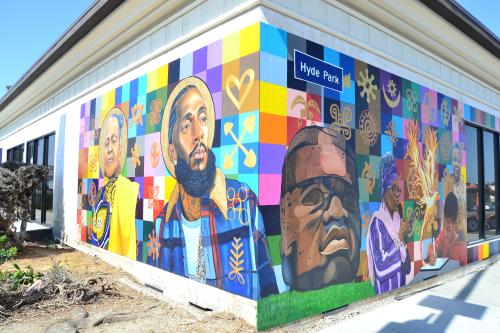
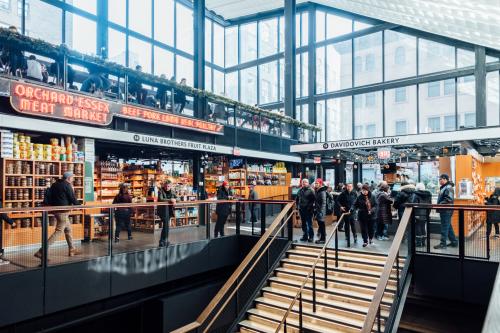



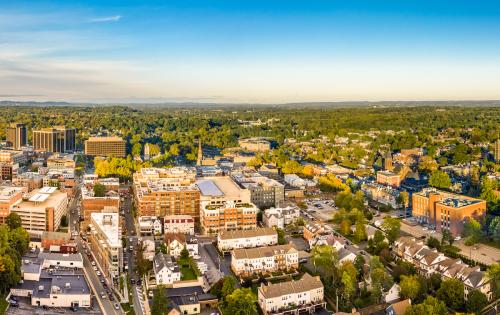
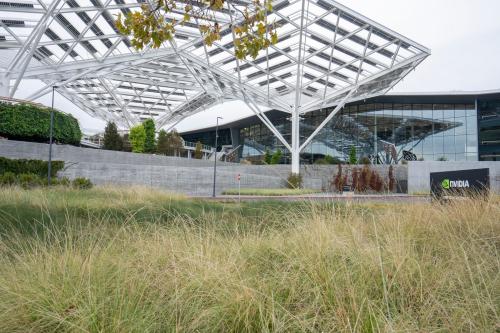
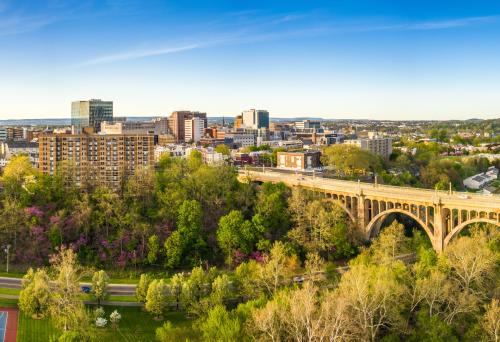
Commentary
Two local leaders discuss how smarter federal policy can save rural America during COVID-19
August 11, 2020